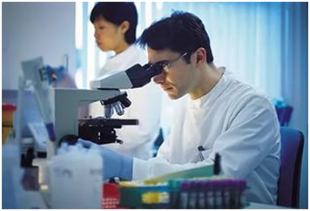
Human Papillomavirus (HPV) is a major cause of morbidity and mortality worldwide. Today it is one of the most common virus, which is transmitted sexually. The threat is susceptible to infection with the Virus, the majority of the population of different age groups.
Every tenth person on the planet infected with this Virus.
Some types of diseases associated with HPV negative impact on the reproductive function of women. Massive identification of new cases celebrated Oncology of the female reproductive organs, which in connection with HPV infection.
Of the story.
Defeat of the skin and mucous membranes known to the mankind for more than a Millennium. Under the name of "warts", they were described by the physicians of Ancient Greece. Of particular relevance to infection acquired in the late twentieth century. The viral nature of warts proved to be, at the beginning of the last century, about the sexual routes of transmission in 1954
Frequency kondilomatoza among the young and middle-aged:
- Years 1981-1986 - 5,4%
- From 1987 to 1999 years - 19.1% of
- currently, up to 60%.
What is an HPV infection?
HPV infection - chronic viral disease, sexually of human-to-human-transmissible infections.
The causative agent of the infection.
The causative agent of the disease -the human Papillomavirus (HPV) is the General name for more than 80 types of viruses, different diseases of the skin and of the mucous membranes of the body. Each of the viruses of the group of HPV has a sequence number.
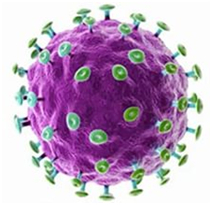
Human Papilloma-Virus detected:
- on the skin
- Of the oral cavity mucous membranes
- the mucous membranes of the conjunctiva
- the mucous membrane of the esophagus
- Mucous membrane of the bronchi, the larynx skin
- Mucous membrane of the rectum
- Mucous membrane of the genital organs
The transmission of the Virus.
The Virus is transmitted only from person to person. The main route of transmission - sexual.
It is also possible:
- Contact-household transmission in the presence of micro-damage to the epithelium, Virus may enter the human body through scratches and abrasions, the Virus from an infected Person remains in the bathroom, gym, swimming Pool, on a towel, shaver
- the medical staff can inhalation of dust during removal, Laser genital warts infect, asset instruments, infect by a surgeon
- transfer of child from the mother during pregnancy
Factors affecting the occurrence or re-occurrence of HPV:
- Hypothermia
- Hormonal Disorders
- Medical Manipulation (Abortion, Intrauterine Device)
- Pregnancy
Group of HPV-infections
- HPV not the cancer (warts on the skin layers)
- HPV low risk of development of cancer (different types of warts on the genitals)
- oncogenic risk (tumor diseases in women and men)
The prevalence of HPV-associated diseases in the world
- 21 000 to cancer of the Vulva and the Vagina (for women)
- 40 000 - Anal cancer (in men)
- 60 000 - Anal-cancer (in women)
- 530 000 - Cervical Cancer (Among Women)
- 17 300 000 - Condylomata acuminata (for men)
- 14 700 000 - Condylomata acuminata (women)
The incubation period from HPV infection can be months in a period of 2 months to 2-10 years, average of 3.
For HPV infection characteristic for covert.
The clinical picture.
During an infection, are diverse. They can disappear spontaneously forward, then back.
Point 3 Course:
- clinical - visible papillomas
- subclinical - no visible manifestations asymptomatic, only in the subsequent examination (colposcopy, or the study of cells)
- deferred - will only be through a blood test
The main symptoms of HPV infection is the emergence of:
- Wart;
- Papillomas - soft growths that develop on the skin, thanks to the stem;
- Genital warts appear - growths with a rough surface (especially around the Anus and the genitals).
Exactly these symptoms, you need to pay attention to in the first place.
The consequences of an infection with the human Papillomavirus:
- Cervical cancer is in second place in the list of main causes of death of women. The life expectancy of the affected women is reduced, on average, 26 years of age. It is proved that 70% of the cases of cervical cancer caused by HPV 16 and 18 types.
- Cervical cancer is completely preventable disease, if detected at an early stage of cancer or the stage of precancer.
- Cancer of the Vulva and the Vagina.
- Anal Cancer. Each year, about 100,000 cases of this type of cancer.
- Cancer of the Penis. Is called in 35% of cases, HPV 16 and 18 as well as HPV 6 and 11-5% of the cases.
- Warts anogenital'nye. Are caused by HPV 6 and 11. According to who, every year in the world registered more than 30 million cases of venereal warts.
- Cancer of the oropharyngeal area in young men.
How to determine the presence of the Virus in the body and his kind?
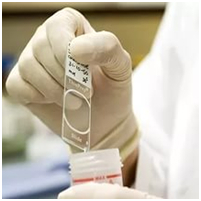
In most cases, the infection is asymptomatic, so that the Virus in the patients is shown in the rule only with the help of a special analysis.
Diagnosis of HPV can include:
- the clinical examination of the patient;
- Examination of the cervix;
- Polymerase chain reaction (PCR) - an effective method of diagnosis, determine the type of the Virus;
- cytological examination under the microscope, examines the nature of the cells (brush Cytology of the cervix);
- Blood test for the determination of antibodies against HPV (this method is used very rarely);
- Biopsy during the diagnostic procedure of "suspicious places" (for example, warts, or papillomas) can take particles of tissue. Assigned when there is a suspicion that the Patient has cancer.
What is a Pap Test?
This is a Test, with which you can be identified pre-cancer or cancer cells in the vagina and the cervix. With the surface of the cervix or of the channel, a special spatula, a swab is taken. - Deposited Material applied to the glass, and sent to the laboratory, where the doctors laboratory in the study of the cellular structure. The Test is named after the name of the Greek scientist George Papanicolaou.
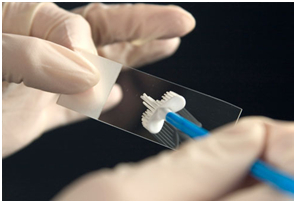
When and by whom a Pap should Test?
- Cytological smears should be every woman at least once per year from the age of 18 or onset of sexual activity In the case of the absence of sexual contacts, the implementation of the analysis of 1 times within 3 years is acceptable.
- Twice a year, cytological smear is recommended, in the case of the use of hormonal contraception, as well as women, the genital Herpes.
- The reason for the more frequent cytological examinations, frequent change of the woman's sexual partners, overweight (obesity), infertility, the presence of genital warts genital.
Prevention of HPV infection.
In view of the special risk of infection, the lack of effectiveness of existing treatments, is of primary importance in the prevention of this infectious disease is winning.
Non-Specific Prevention:
- sexual education of teenagers
- Limiting the number of sexual partners
- Use of condoms is the risk of transmission of HPV
- cervical Screening is the regular examination of women with a Pap Test (with swabs of the cervix) for timely detection and treatment of the pathology
- Smoking cessation
Specific Prevention:
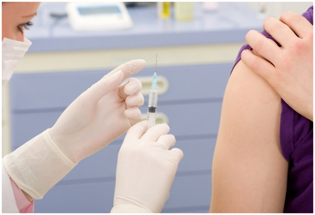
Vaccination against the most dangerous (oncogenic) types of HPV from boys and girls 12-13 years of age until the onset of sexual activity and possible contact with HPV. After vaccination, immunity is formed.
Why is it so necessary for a vaccine against the HPV infection is?
Human papilloma virus malignant degeneration of the cells, i.e. the cause of cancer, in particular cervical cancer, are cause.
In recent years, the rapid growth of the place in the frequency of genital cancers in men, in connection with which more and more often the question about the introduction of the vaccination against HPV representatives of both sexes.
Currently, HPV vaccination is in the vaccination schedule in 57 countries of the world, in six of them vaccination introduced for both sexes.
The effectiveness of the vaccination reached 98-100%, what is proven by clinical studies.
Vaccination against HPV is most effective before onset of sexual activity, but it is recommended that all women from a young age.
The introduction of a large-scale vaccination prevents up to 80-82% of all tumors in this group.
Prevention of HPV-infection is one of the most important components in the prevention of cervical cancer in women, and certain types of cancer in men.

























